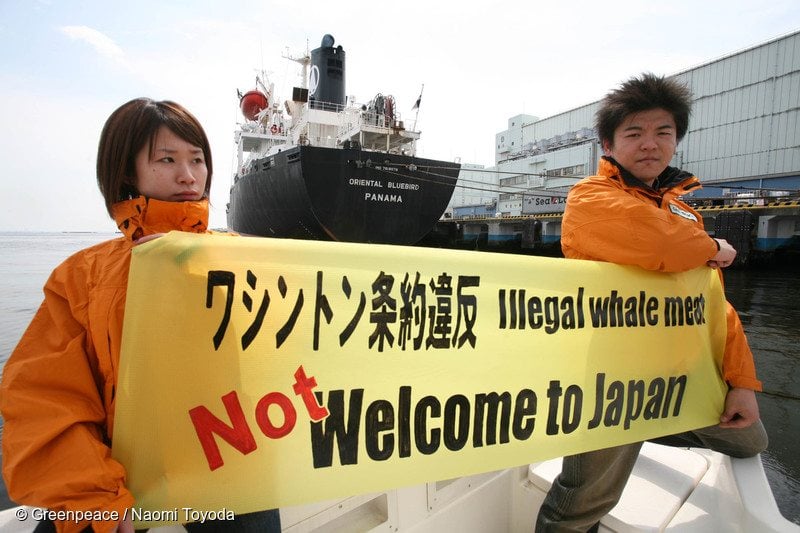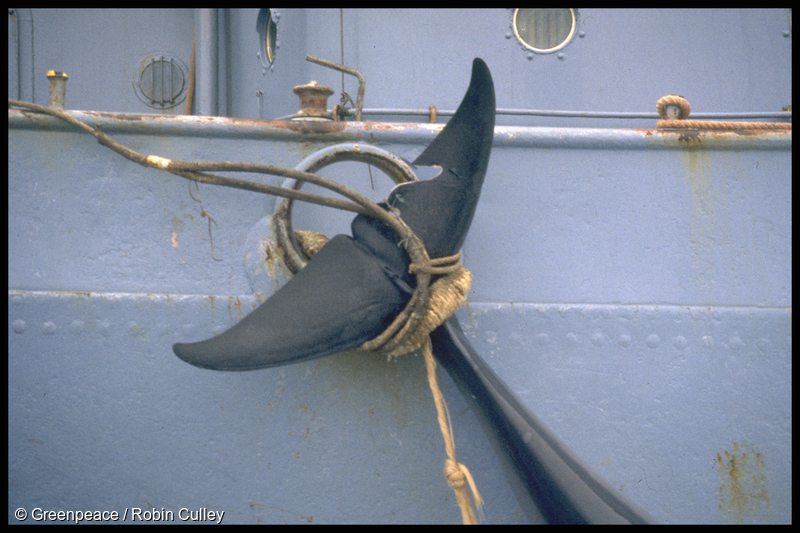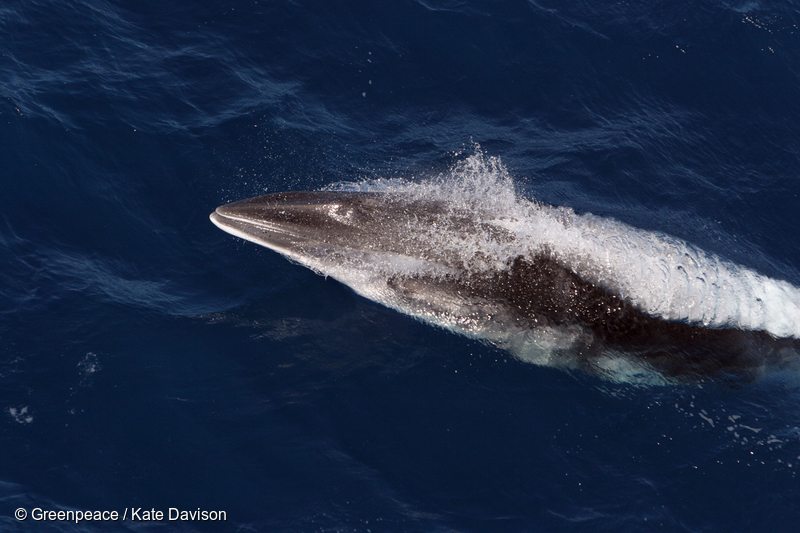For decades, Greenpeace along with other conservation groups, has been fighting to stop the hunt. Year after year, my colleagues and I track and expose whaling vessels out at sea, and it breaks my heart to think that yet again, this unwanted and unnecessary whaling programme still continues.
So, what will it take to shut down the program once and for all? These three things are critical to ending it:
1. Follow the money — and cut it off.
For years, Greenpeace and other Japanese NGOs have called out the Japanese government for its subsidies to the whaling industry, including its misuse of funds intended for the victims of the Fukushima disaster in 2012.
The whaling program in the Southern Ocean costs Japanese taxpayers 3.1 billion yen every year — about US$2.5 million — in direct subsidies alone. It’s a lot of money to spend on a food that is rapidly declining in popularity in Japan.

The Nisshin Maru, Japan’s “research” whaling fleet, leaves port for the Southern Ocean to behin the 2010-2011 whaling season.
You might think whale meat is hugely important to the Japanese diet, but it isn’t. Whale meat was only ever widely popular in post-war Japan, when industrial whaling was introduced to feed a starving population.
And it’s not widely supported. In fact, a study commissioned by Greenpeace Japan found that up to 80 percent of respondents in Japan disagreed with whaling on the high seas, while the amount of uneaten whale meat sitting in frozen stockpiles has doubled to 4,600 metric tons between 2002 and 2012.
Continuing to expose the absurd subsidies for this whaling program that produces no research, unwanted meat and considerable international condemnation of Japan will help to shut it down. Without this subsidy, the whaling program in Japan will collapse.
2. Apply international political pressure.
It’s worked before. In the face of public outcry and diplomatic pressure from around the world — and from the United States and Australia in particular — Japan announced in December 2007 a temporary scaling back of its plans to kill 50 humpbacks in the 2007-2008 season.

A 3-meter inflatable whale intended for Australian Prime Minister Malcolm Turnbull. More than 55,000 people signed a petition urging Turnbull to raise the issue of whaling with Japanese Prime Minister Shinzo Abe. In December 2015, Turnbull’s office announced that he would do so.
But it’s time to step it up.
In Argentina, Chile, the United Kingdom and elsewhere, we are taking your concerns to political leaders, as well as urging an overhaul of the International Whaling Commission (IWC), the body that created the commercial whaling moratorium in 1982. It’s essential the IWC finally closes loopholes that are being used to legitimize commercial hunts under the guise of science by shifting the objective of its scientific committee to conservation and modernizing its procedures to ensure transparency and civil society involvement.
Australia’s prime minister has already raised his country’s objections to whaling during a recent visit to Tokyo after more than 55,000 people signed a petition urging him to do so. This followed the Australian government’s successful effort to prove that Japan’s hunt was illegal at the International Court of Justice (ICJ).
We need allies to help discredit Japan’s so-called “scientific whaling”, including investigating further international legal action. This could, for example, come via the United Nations Convention on the Law of the Sea, the international law that defines nations’ rights and responsibilities with regard to oceans.
Last year, Greenpeace Japan joined 15 other Japanese NGOs to demand that the government of Japan abide by the recent ICJ ruling dispelling the myth that Japan’s Southern Ocean whaling is for scientific purposes.

Greenpeace activists greet the arrival of the ‘Oriental Bluebird’ to Ooi Suisan Futo, Tokyo, with the message in English and Japanese ‘Illegal Whale Meat Not Welcome to Japan’ (2008).
If we can combine international pressure with action from within Japan, we can break the social license the whaling program thinks it holds in Japan.
3. Save our oceans.
If we can’t save the ocean, then there’s no home worth saving for healthy whales too.
Overfishing, for instance, is threatening a total collapse of ocean ecosystems, with one recent study showing a 50 percent decline in fish species between 1970 and 2012. In fact, bycatch in fisheries is a massive threat, estimated to kill up to 300,000 whales, dolphins and other cetaceans each year.

A minke whale attached to side of Japanese catcher ship (1992).
If we zone off about 40 percent of the oceans as protected areas — places that are special to marine life — then we can give our oceans the breathing space they need to recover and keep our planet running. Protecting areas like the Arctic and the Antarctic as sanctuaries, for instance, is crucial to the survival of unique species like narwhals and beluga, as well as migrating whales that feed there.


